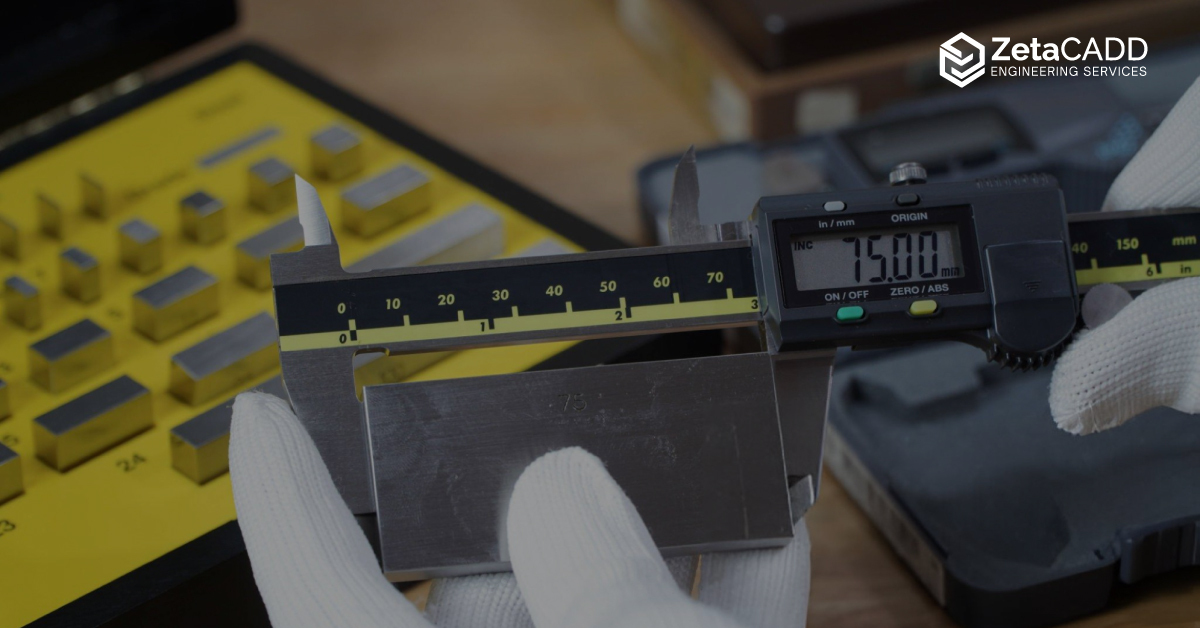Tolerance Stack-Up Analysis: Why It Matters in Precision Product Design
If a product cannot be assembled easily, needs too many design iterations, and is not easy to scale, it is a nightmare for any business. Even when the product looks too good on paper, cost overruns and frequent downtimes are like the rude wake-up calls that must be taken seriously. Out of the many considerations for product design, understanding tolerances and how they behave during and after assembly is important. Hence, Tolerance stack-up analysis.
Let’s understand what tolerance stack-up is.
When a small tolerance of a part in an assembly is added to similar small tolerances of other interacting parts, it adds up(stacks up) into a larger variation. This huge variation in tolerance can cause assembly issues and mechanical failure.
Tolerance Stack-Up is Common in:
- Complex geometries: Designs with multiple features and complex shapes
- Moving parts: Designs with gears, levers, and actuators
- Interchangeable parts: Designs where parts need to be interchanged or replaced frequently.
- Many connected parts: Designs with numerous interconnected parts with both linear and angular stack-up.
- Precision-critical designs: Designs that are connected to critical mechanisms and precision-critical applications.
What happens if tolerance stack-up is not considered in the design stage?
- Product quality is compromised
- Product lifespan gets shorter
- The assembly faces problems like:
- Parts do not fit properly
- A lot of manual intervention is needed
- Assembly slows down
- Design has to be iterated frequently. This increases rework at every stage.
- Functionality of the product gets hampered. Components jam or fail to move as intended.
- The product does not comply with the required regulatory or safety standards
- And last but not least, the costs increase, and it affects the ROI!
Improving product design begins with a structured tolerance strategy. Use this refined checklist to guide your process:
- Pay attention to measurements that directly impact your product’s function, durability, and safety. Prioritize these dimensions during analysis.
- Use the analysis method that is best for your application requirements
- Worst-case analysis is best when your design must comply with strict regulations and safety standards.
- Statistical methods (like Root Sum Square) are best when minor tolerance variations are ok. This method lets you strike a practical balance between production cost and product performance.
- Monte Carlo simulations are the best for complex assemblies. Simulating thousands of possible outcomes helps identify the problems early and avoid costly prototype testing repeatedly.
- Define a logical and consistent set of reference points across all mating parts by building a solid Datum framework.
- Map the complete tolerance chain: Trace how variations accumulate from one part to the next to avoid unexpected stack-ups during assembly.
- Apply Geometric Dimensioning and Tolerancing consistently, clearly and uniformly. Make sure that team members know how to interpret both size and form controls like flatness, angularity, and concentricity.
- Manufacturing methods like CNC machining, molding, or additive manufacturing have their limitations. Adjust tolerances to align with the manufacturing method.
- Design parts that are easy to manufacture. Avoid overengineering and use standardized measurements where you can.
- CAD and simulation software have made it easy to test products by simulating real-world environment even before its first physical prototype is made. Use these tools to test and validate designs.
- Communicate and collaborate with manufacturing and QC teams to validate assumptions and ensure feasibility.
- Maintain documentation for all tolerance stack-up assumptions, calculations, and decisions. This improves traceability and makes audits easier.
Key Focus Points:
- Function: A product is practically useless if it does not function as intended. It must be designed to sustain and do its job under its application environment. For example, stress, high temperature, friction, chemical corrosion, etc.
- Assembly: Analyse tolerance stack-up and make necessary adjustments to streamline assembly. It helps components fit together easily without forcing or misalignment, thus streamlining assembly and improving throughput.
- Manufacturability: Different manufacturing processes (like CNC machining, injection molding, casting, and stamping) have their limitations. Considering these is important in tolerance stack-up analysis. Hence, adjust tolerances based on manufacturing processes and capabilities.
- Cost control: Don’t over-engineer when the application does not require such stringent tolerances – it can spell doom. Relax tolerance if there is no risk of stack-up and strike the right balance of cost, performance and quality.
- Reliability and repeatability: A well-thought-out tolerance scheme ensures that there are fewer defects, reduced warranty claims, and better customer satisfaction. It makes a product reliable and a brand trustworthy, earning loyal customers and repeat orders.
To sum it up:
Tolerance stack-up analysis is a preemptive measure that allows you to analyze beforehand how the minor tolerances of individual parts will accumulate and affect the assembly and the product’s performance. Evaluate the implications and adjust manufacturing tolerances right through the design stage, i.e., before it is too late.
Stack-up calculations and analysis will help you to make smart and informed decisions and ensure better functionality, manufacturability, and reliability of a product. It is a strategic tool for precision product design. Including tolerance stack-up analysis in the design stage will help you avoid costly design mistakes. – Result? Smooth assembly and production, lower costs, high-performing products, and higher ROI for businesses.


